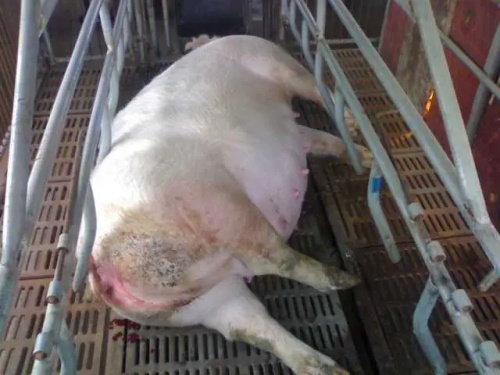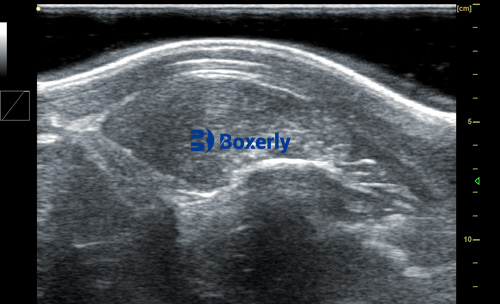In modern pig farming, precision, efficiency, and early diagnosis are essential for maximizing reproductive performance, meat quality, and herd health. One of the most versatile and non-invasive tools that pig producers around the world increasingly rely on is ultrasonography, particularly B-mode ultrasound. From pregnancy detection and fetal monitoring to evaluating fat thickness and diagnosing diseases, ultrasound technology has transformed how we manage swine production. This article explores how ultrasound is applied in pig farming, with an emphasis on its real-world utility as understood and practiced by farmers and veterinarians internationally.

Monitoring Pregnancy and Ovulation in Sows
Reproductive efficiency is at the heart of profitable pig farming. Ultrasound allows for detailed observation of ovarian activity, including the development of follicles and the timing of ovulation—critical information that helps producers optimize breeding times. In countries such as Denmark, the Netherlands, and the United States, sow ovulation monitoring using ultrasound has become standard in large-scale operations.
Timing insemination correctly not only improves conception rates but also reduces the number of repeat breeders, ultimately saving labor and feed costs. Early pregnancy diagnosis using ultrasound, typically around 21 to 30 days post-insemination, enables the early identification of non-pregnant or pseudopregnant sows. These animals can then be re-integrated into breeding schedules quickly, minimizing downtime and boosting overall productivity.
Beyond early detection, ultrasound is valuable throughout the gestation period. It helps in monitoring embryonic development, identifying signs of fetal death, resorption, or abortion, and even estimating litter size. In late gestation or during farrowing, ultrasound can assist in determining whether a sow has completed delivery or is experiencing complications, such as retained piglets.
After parturition, ultrasound serves another important role—monitoring the uterus for signs of incomplete involution or reproductive disorders. Conditions like endometritis, uterine fluid accumulation, or pyometra can be diagnosed early and treated accordingly. In some cases, practitioners have even detected early stages of reproductive tract infections that might indicate larger herd health issues.

Evaluating Backfat Thickness and Eye Muscle Area in Breeding Stock
One of the key challenges in genetic selection and breeding is choosing animals that possess optimal carcass traits. Backfat thickness and eye muscle area are closely related to lean meat yield and overall meat quality. Accurate measurement of these traits in live animals is made possible through ultrasound.
In breeding programs worldwide—especially in countries like Canada and Germany—ultrasound scanning is commonly used to assess these characteristics. The data collected helps breeders select pigs with desirable fat-to-muscle ratios, enhancing genetic progress over generations.
Ultrasound allows for consistent, repeatable measurements at specific anatomical landmarks, such as the last rib or the loin area. These measurements are non-invasive and do not compromise the reproductive performance of the pigs, making ultrasound a powerful tool in live animal evaluation.
Furthermore, ultrasound-guided selection enables producers to refine feeding programs. By knowing the exact backfat thickness of a pig, diets can be tailored to maintain growth while managing fat deposition, thus improving feed efficiency and meat quality.

Predicting Fetal Age and Litter Size
Another advanced application of ultrasound in pig production is estimating the gestational age of fetuses and predicting litter size. This is particularly valuable for planning farrowing schedules, optimizing sow management, and ensuring labor availability during the critical birthing window.
By measuring various fetal parameters, such as the crown-rump length, skull diameter, or heart rate, veterinarians can estimate the age of the developing fetuses with reasonable accuracy. When combined with routine checkups, these measurements give producers a dynamic view of reproductive performance and allow them to make informed decisions about sow care and diet adjustments during pregnancy.
In highly intensive swine farms in countries like China and the United States, ultrasound prediction of fetal number and size has become integral to breeding strategies. Experienced technicians can identify abnormalities early, allowing farms to manage resources effectively and avoid reproductive losses.
Diagnosing Reproductive and Systemic Diseases
Ultrasound is not limited to reproductive assessment—it also serves as a valuable diagnostic tool in veterinary clinics. Various diseases that were once difficult to identify without invasive procedures can now be detected through ultrasound scanning.
Reproductive tract abnormalities, including cystic ovaries, inactive ovaries, uterine infections, or fluid buildup, are routinely diagnosed using ultrasound. For boars, the technology is used to examine testicular size, texture, and the presence of abnormal masses or asymmetry that may indicate reproductive dysfunction.
Outside the reproductive system, ultrasound has been used to examine organs such as the liver and kidneys, detect internal tumors, or monitor the size and development of lymph nodes. In many swine veterinary clinics across Europe and Asia, ultrasound has become an essential diagnostic instrument, particularly in identifying diseases at early stages before clinical symptoms become apparent.
This capability supports faster and more targeted treatment, reducing the need for antibiotics and improving animal welfare—an important consideration given global concerns about antimicrobial resistance and animal health standards.

Enhancing Herd Management and Biosecurity
Regular ultrasound scanning also contributes to better herd-level decision-making. By integrating ultrasound data into digital management platforms, producers can track reproductive success rates, analyze patterns of fetal loss, and monitor disease prevalence.
For instance, if repeated cases of fetal resorption or uterine infections are detected across multiple animals, it could suggest a larger issue with herd health or biosecurity. In such cases, ultrasound acts as an early-warning system, prompting further investigation into possible causes such as environmental stress, nutritional deficiencies, or infectious agents.
In some advanced farms, ultrasound data is linked with cloud-based herd management software. This integration allows farm managers to generate reports, track performance over time, and refine breeding strategies using real-time information.
Practical Benefits from the Farmer’s Perspective
The advantages of using ultrasound in pig farming go beyond just diagnostics. From the perspective of a producer, the technology offers:
-
Non-invasive accuracy: No need for invasive procedures. Ultrasound offers quick, reliable, and repeatable results.
-
Improved timing: Better timing of insemination, farrowing, and weaning decisions.
-
Reduced costs: Early identification of reproductive failures avoids wasted resources on non-productive animals.
-
Increased productivity: Maximized reproductive efficiency and carcass quality through targeted breeding and feeding.
-
Enhanced animal welfare: Minimizing stress and invasive procedures contributes to better overall health and performance.
Veterinarians and producers in countries such as the UK, Australia, and South Korea have highlighted ultrasound’s role in advancing herd health, with many suggesting it is now a cornerstone of modern swine veterinary practice.
Conclusion
Ultrasound technology has redefined precision in pig farming. From breeding and pregnancy monitoring to disease diagnosis and carcass trait evaluation, its applications are extensive and continually evolving. As more farms across the globe adopt ultrasound-based practices, the emphasis on animal health, reproductive efficiency, and meat quality will only grow stronger.
For swine producers looking to improve herd performance, reduce costs, and make data-driven decisions, ultrasound offers a compelling combination of reliability, safety, and actionable insights. As global demand for high-quality pork continues to rise, embracing such technology will be key to staying competitive in a rapidly advancing industry.